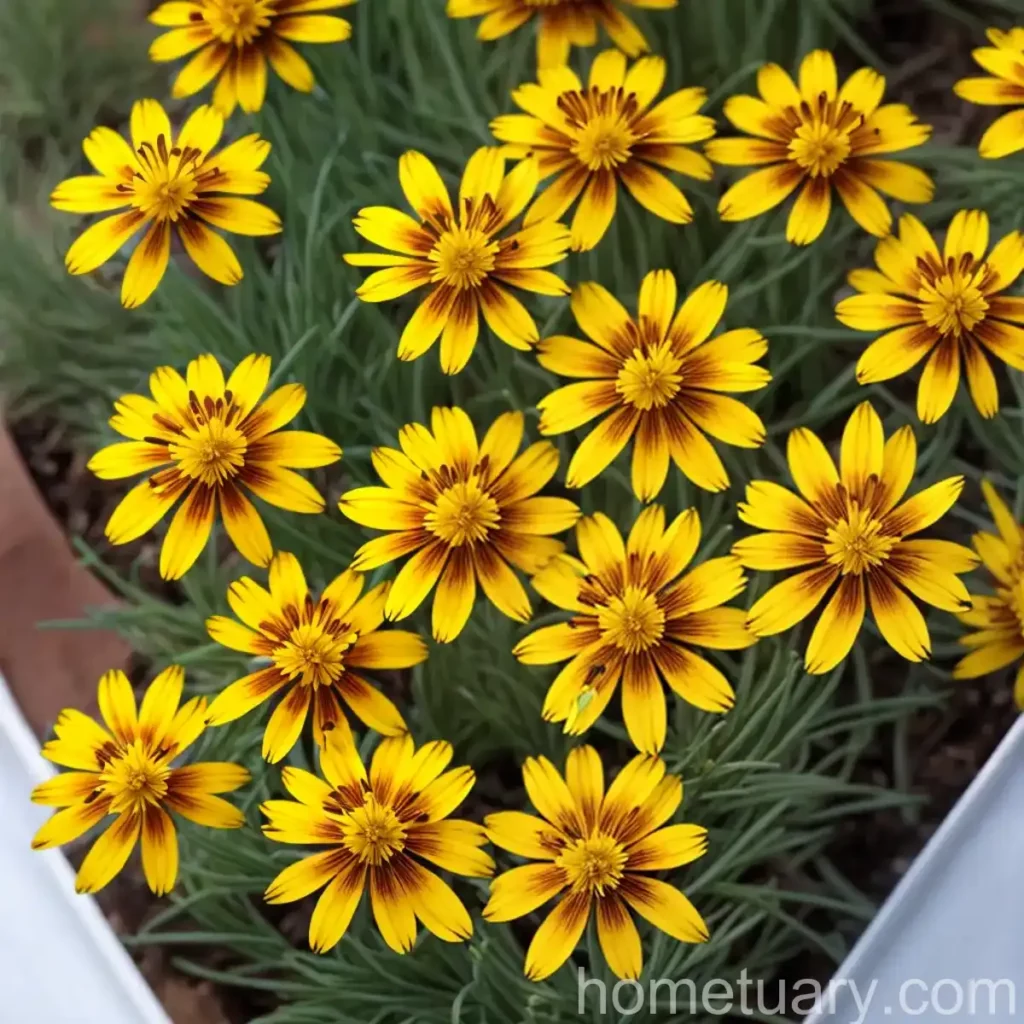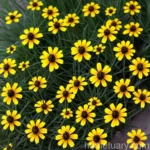Large-Flowered Tickseed (Coreopsis grandiflora): Everything You Need to Know
Large-flowered tickseed, scientifically known as Coreopsis grandiflora, is a vibrant and versatile flowering plant that is beloved by gardeners for its beautiful blooms and low-maintenance nature. As a plant scientist and enthusiast, I am excited to delve into the world of large-flowered tickseed and provide a comprehensive guide covering everything from its culture and uses to care tips, maintenance, and more. Whether you are a seasoned gardener or a novice enthusiast, this extensive resource will equip you with the knowledge and insights needed to cultivate and appreciate this stunning plant.
What is Large-Flowered Tickseed (Coreopsis grandiflora)?
Large-flowered tickseed, or Coreopsis grandiflora, is a species of perennial flowering plant that belongs to the Asteraceae family. With its native range spanning across the eastern and central United States, large-flowered tickseed has earned a reputation for its showy, daisy-like flowers and its ability to thrive in a variety of garden settings. The plant is characterized by its deeply-lobed leaves and bright, cheerful blooms that typically appear in shades of yellow, although cultivars with variations in color have been developed.
Key Takeaways
Before we dive into the specifics of large-flowered tickseed, let’s take a moment to highlight some key takeaways about this captivating plant:
- Large-flowered tickseed, or Coreopsis grandiflora, is a perennial flowering plant known for its radiant, daisy-like blooms.
- It is prized for its low-maintenance nature and its ability to attract pollinators such as butterflies and bees.
- Large-flowered tickseed thrives in well-drained soils and is tolerant of hot, sunny conditions, making it an excellent choice for gardeners in various climates.
Now that we have set the stage, let’s explore the various facets of large-flowered tickseed, from its cultural significance to its uses and care requirements.
Culture
Large-flowered tickseed has a rich cultural significance, revered for its vibrant blooms and resilience. It has been cultivated for both ornamental and practical purposes, adding color and charm to gardens while also serving as a valuable source of nectar for pollinators. In indigenous cultures, certain species of Coreopsis have been used for their medicinal properties, and the plants are often celebrated for their ecological contributions.
Uses
The uses of large-flowered tickseed extend beyond mere visual appeal. In gardens and landscapes, it serves as a striking ornamental plant, brightening up flower beds, borders, and containers with its dazzling display of flowers. Additionally, large-flowered tickseed is instrumental in attracting beneficial insects, including butterflies and bees, making it an essential component of pollinator-friendly gardens. With its enduring blooms and minimal maintenance requirements, Coreopsis grandiflora is a versatile and valuable addition to any garden or landscape.
Water
Large-flowered tickseed excels in well-drained soil and is relatively drought-tolerant once established. While it is essential to provide consistent moisture during the plant’s establishment period, established large-flowered tickseed plants generally require minimal supplemental watering. However, during prolonged dry spells, it is advisable to provide additional water to support healthy growth and prolific blooming.
Sunlight
When it comes to sunlight requirements, large-flowered tickseed thrives in full sun to partial shade. Ideally, it should be planted in a location that receives at least six hours of direct sunlight per day. Thriving under sunny conditions, large-flowered tickseed produces an abundance of vibrant blooms and maintains a compact, robust growth habit.
Fertilizer
Large-flowered tickseed benefits from a balanced, all-purpose fertilizer applied in early spring, just as new growth emerges. A slow-release fertilizer is an excellent choice, as it provides a steady supply of nutrients to support healthy growth and blooming throughout the growing season. It is crucial to follow the recommended application rates and avoid over-fertilization, as excessive fertilizer can lead to lush foliage at the expense of flower production.
| Fertilizer Type | Application Period | Application Rate |
|---|---|---|
| All-purpose fertilizer | Early spring (as new growth emerges) | Follow manufacturer’s recommendations |
Soil
Large-flowered tickseed thrives in well-drained soil and exhibits excellent adaptability to various soil types, including sandy, loamy, and clay soils. It is essential to ensure that the planting site offers good drainage, as consistently wet or waterlogged conditions can lead to root rot and other moisture-related issues. A slightly acidic to neutral soil pH range of 6.0 to 7.0 is optimal for promoting vigorous growth and abundant flowering.
Pruning
Pruning plays a crucial role in maintaining the health and appearance of large-flowered tickseed. Regular deadheading, which involves the removal of spent blooms, encourages continuous flowering and prevents the plant from expending energy on seed production. Additionally, light pruning in early summer can help promote bushier growth and enhance the overall aesthetic appeal of the plant. As the growing season progresses, trimming back leggy or overcrowded stems can rejuvenate the plant and stimulate a fresh flush of blooms.
Propagation
Large-flowered tickseed can be propagated through several methods, including division, stem cuttings, and seed sowing. Each approach offers its unique advantages and challenges, allowing gardeners to choose the most suitable method based on their preferences and resources. Whether dividing mature plants to rejuvenate their vigor or starting new seedlings from collected seeds, successful propagation ensures a continuous supply of large-flowered tickseed to enrich gardens and landscapes.
Container Popularity
The striking beauty and compact growth habit of large-flowered tickseed make it a popular choice for container gardening. Whether grown in individual containers or included in mixed plantings, Coreopsis grandiflora illuminates outdoor spaces with its cheerful blooms and adds a touch of natural elegance to patios, decks, and balconies. Container-grown large-flowered tickseed offers the flexibility to showcase the plant’s splendor in various settings and easily adapt to changing design preferences.
Container Common Diseases
While large-flowered tickseed is relatively resistant to diseases, container-grown plants may be susceptible to certain issues, primarily arising from moisture imbalance and inadequate growing conditions. Common fungal diseases such as powdery mildew and root rot can affect plants in containers if proper care and maintenance practices are not followed. To mitigate the risk of diseases, it is crucial to provide adequate air circulation, avoid overwatering, and use well-draining potting mix when cultivating large-flowered tickseed in containers.
Disease Diagnosis
Identifying and addressing plant diseases promptly are essential for preserving the health and vitality of large-flowered tickseed. By familiarizing themselves with the symptoms and signs of common diseases such as powdery mildew and root rot, gardeners can intervene effectively and implement targeted control measures. Early detection and appropriate treatment strategies, including cultural practices and, if necessary, select fungicidal treatments, are instrumental in mitigating the impact of diseases and supporting the long-term well-being of large-flowered tickseed plants.
Common Pests
Large-flowered tickseed is generally resistant to pest infestations, thanks to its robust nature and inherent pest-repelling properties. However, certain common garden pests, including aphids and spider mites, may occasionally target the plant, particularly during periods of environmental stress or suboptimal growing conditions. Regular monitoring and the implementation of proactive pest management measures, such as insecticidal soap or horticultural oil applications, can effectively deter and control pest populations without compromising the plant’s health or the surrounding ecosystem.
Botanist’s Tips
As a plant scientist with a deep appreciation for the natural world, I am eager to share some valuable insights and tips for cultivating and enjoying large-flowered tickseed:
- Incorporate large-flowered tickseed into pollinator-friendly gardens to attract and support diverse beneficial insects, contributing to a thriving and balanced ecosystem.
- Experiment with different cultivation methods, such as container gardening and mixed plantings, to showcase the versatility and aesthetic appeal of Coreopsis grandiflora in various outdoor spaces.
- Regularly observe and interact with large-flowered tickseed to gain a deeper understanding of its growth patterns, flowering behavior, and interactions with pollinators, fostering a deeper connection with the natural world.
Fun Facts
Delving into the realm of large-flowered tickseed unveils intriguing and delightful facts that shed light on the plant’s unique attributes and captivating qualities:
- Large-flowered tickseed’s botanical name, Coreopsis grandiflora, is derived from the Greek words “koris,” meaning bedbug, and “opsis,” meaning like, alluding to the plant’s perceived resemblance to the parasitic insect.
- Some varieties of large-flowered tickseed exhibit striking color variations, including shades of red, pink, and bi-colored blooms, adding a captivating dimension to garden displays and landscape compositions.
Links to External Resources
A comprehensive understanding of large-flowered tickseed is enhanced by exploring diverse perspectives and sources of information. Here are some valuable external resources that offer in-depth insights into Coreopsis grandiflora:
-
The American Horticultural Society’s Guide to Landscaping with Perennials
-
University of Florida’s Institute of Food and Agricultural Sciences – Gardening Solutions
-
The United States Department of Agriculture’s Plant Hardiness Zone Map
-
The North American Butterfly Association’s Butterfly Gardening Resources
Armed with these resources, enthusiasts and professionals alike can embark on a rewarding journey of discovery and education, deepening their appreciation for the captivating world of large-flowered tickseed.
In conclusion, large-flowered tickseed (Coreopsis grandiflora) emerges as a delightful and resilient plant that embodies the essence of natural beauty and biodiversity. With its radiant blooms, low-maintenance nature, and ecological significance, it enriches gardens, landscapes, and the surrounding environment. By embracing the profound allure of large-flowered tickseed and nurturing a deeper understanding of its cultural, ecological, and practical dimensions, we embark on a journey that celebrates the enduring splendor of nature and empowers us to cultivate thriving, vibrant ecosystems one plant at a time.















